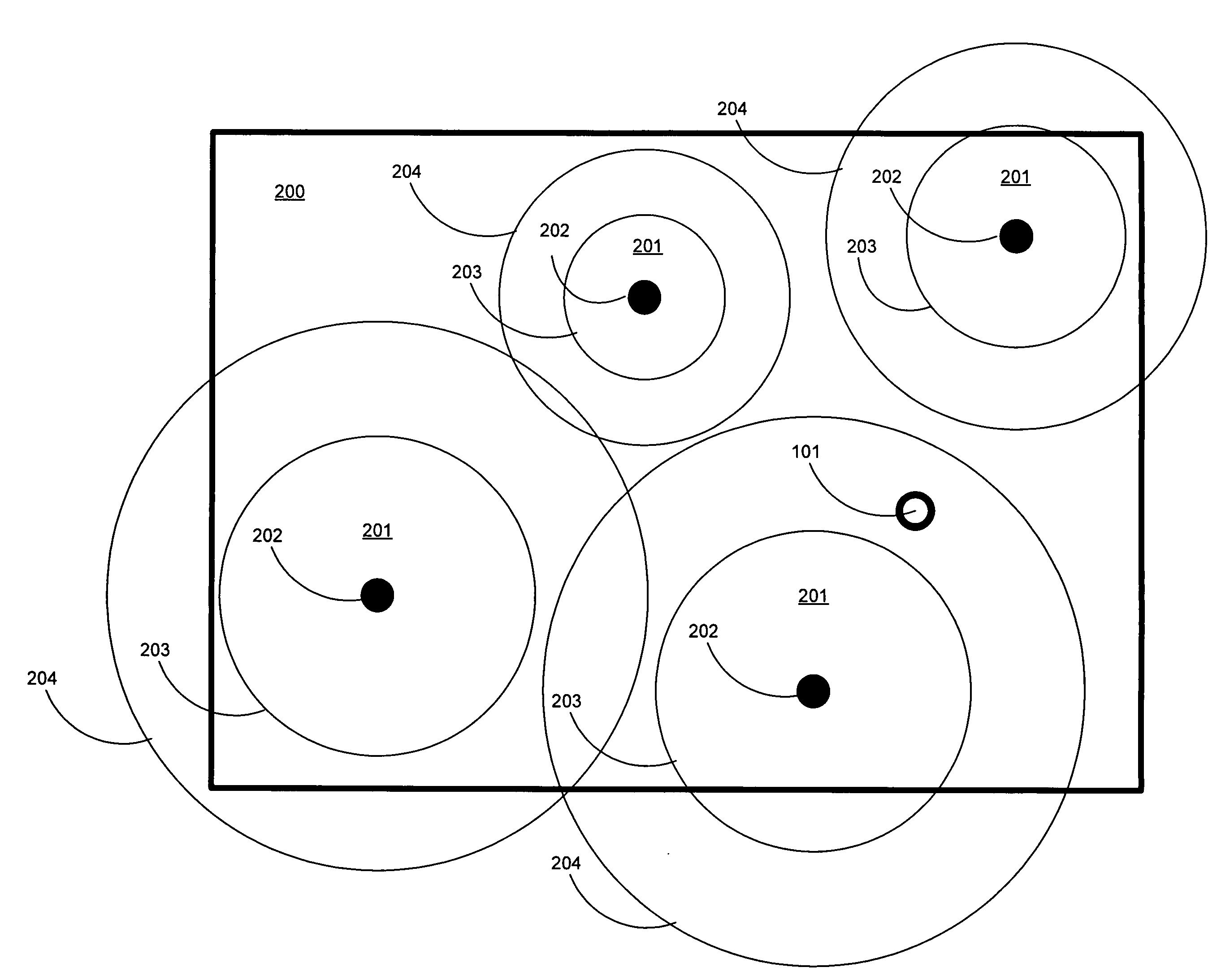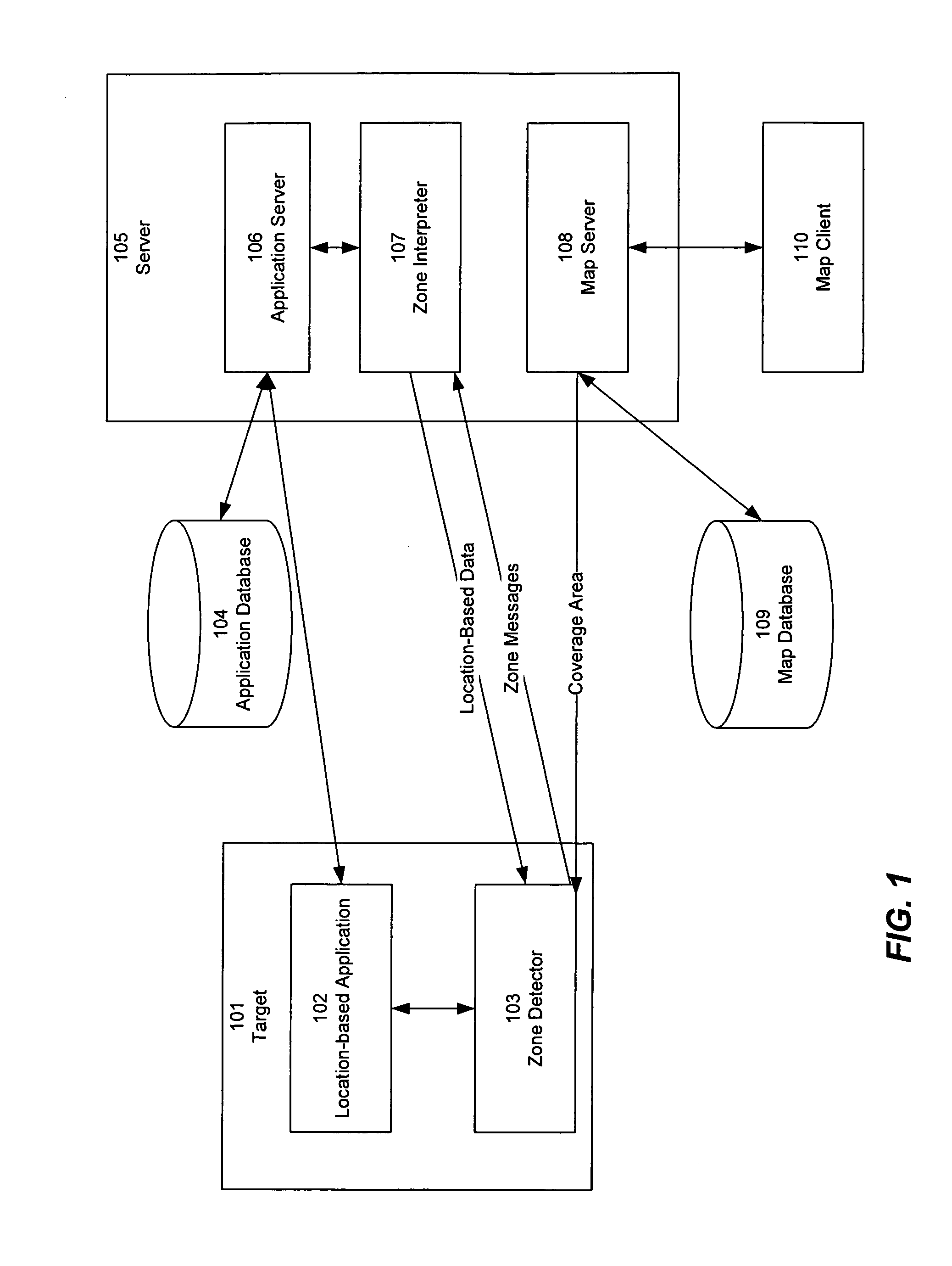Configurable zone-based location detection
a technology of location detection and configurable zones, applied in the field of location detection, can solve the problems of inaccurate detection of a zone, lack of functional usefulness of gps, and existing location detection techniques that operate by signal strength measurement often fail to provide timely and accurate location detection, etc., to achieve the effect of reducing the incidence of false positives, enhancing the configurability, adaptability and flexibility of the location detection system
- Summary
- Abstract
- Description
- Claims
- Application Information
AI Technical Summary
Benefits of technology
Problems solved by technology
Method used
Image
Examples
Embodiment Construction
System Architecture
[0034]Referring now to FIG. 1, there is shown a block diagram depicting an example of a system architecture for practicing the present invention according to one embodiment. In one embodiment, as illustrated, the invention is implemented using a client / server architecture, although one skilled in the art will recognize that other architectures are possible. For illustrative purposes, a single target 101 is shown, although one skilled in the art will recognize that the present invention can be implemented with any number of targets 101. In addition, a single server 105 is shown, although it may be beneficial in some cases to provide multiple servers 105. Communication between server 105 components and target 101 components can be accomplished using any known network communication protocol, including for example a wireless communication protocol.
[0035]Referring also to FIG. 2, there is shown an example of a coverage area 200 including a number of zones 201 and acces...
PUM
 Login to View More
Login to View More Abstract
Description
Claims
Application Information
 Login to View More
Login to View More - R&D
- Intellectual Property
- Life Sciences
- Materials
- Tech Scout
- Unparalleled Data Quality
- Higher Quality Content
- 60% Fewer Hallucinations
Browse by: Latest US Patents, China's latest patents, Technical Efficacy Thesaurus, Application Domain, Technology Topic, Popular Technical Reports.
© 2025 PatSnap. All rights reserved.Legal|Privacy policy|Modern Slavery Act Transparency Statement|Sitemap|About US| Contact US: help@patsnap.com



